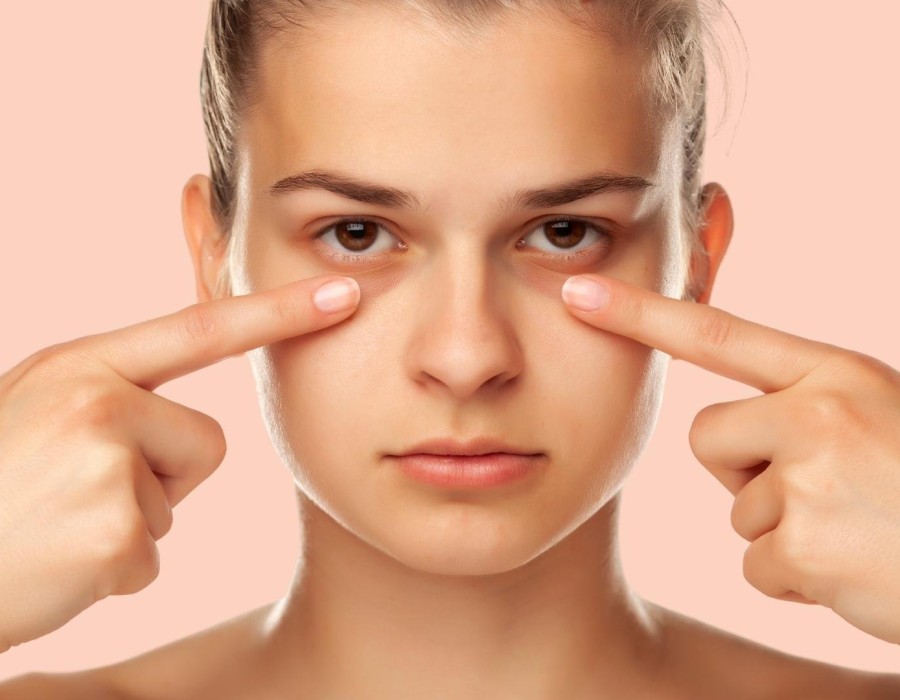Dark circles under the eyes are a common cosmetic concern that many people notice at some point in their lives.Understanding this connection is essential for those seeking effective solutions, including various options available for Dark Circles Treatment in Dubai. Eye strain, also known as asthenopia, occurs when the eyes become tired from prolonged use, such as staring at digital screens, reading in poor light, or performing intense visual tasks without adequate breaks. The symptoms of eye strain include discomfort, headaches, blurred vision, and a sensation of dryness or irritation in the eyes.
What Causes Dark Circles?
Before exploring the link between eye strain and dark circles, it’s important to understand the common causes of dark circles:
- Genetics: Some individuals naturally have thinner skin or more pigmentation around their eyes, which can make blood vessels more visible.
- Aging: As we age, skin loses collagen and thins, making veins under the eyes more prominent.
- Lack of sleep: Insufficient rest can cause paleness of the skin and fluid retention, leading to shadowed areas.
- Dehydration: Dry skin can make dark circles stand out.
- Allergies and nasal congestion: These can dilate blood vessels around the eyes, causing darkening.
- Lifestyle factors: Smoking, excessive alcohol consumption, and poor diet also contribute.
How Eye Strain Contributes to Dark Circles?
When you experience eye strain, several physiological changes can contribute indirectly to the formation of dark circles:
Increased Blood Flow and Dilated Vessels
Eye strain causes the blood vessels around the eyes to dilate as the body attempts to increase oxygen supply to fatigued muscles and tissues. This dilation can make the thin skin under the eyes appear darker, as more blood is visible through the skin.
Rubbing and Touching the Eyes
People experiencing eye strain often rub their eyes to relieve discomfort. Frequent rubbing can inflame the delicate skin around the eyes, break tiny capillaries, and cause pigmentation changes that worsen the appearance of dark circles.
Fatigue and Poor Sleep Quality
Eye strain often results from prolonged screen time or intense visual focus, which can disrupt sleep patterns and reduce sleep quality. Since poor sleep is a well-known cause of dark circles, this creates an indirect but strong connection.
Muscle Tension
Strained eyes can lead to tension in the surrounding facial muscles. This tension can cause fluid accumulation and puffiness under the eyes, which can cast shadows that appear as dark circles.
Treatment Process for Dark Circles
Addressing dark circles involves both lifestyle changes and targeted treatments. If you have persistent dark circles, consulting a specialist for professional evaluation and treatment options is advisable. Below is an overview of common treatment steps and methods:
- Chemical Peels: These involve applying mild acids to the skin to exfoliate and improve pigmentation.
- Microneedling: This stimulates collagen production to thicken skin and reduce visible veins.
- Laser Therapy: Targets pigmentation and enhances skin texture by promoting collagen growth.
- Fillers: Injectable fillers add volume under the eyes to smooth shadows caused by thinning skin or fat loss.
- PRP Therapy (Platelet-Rich Plasma): Uses the patient's own blood components to rejuvenate skin and improve circulation.
Benefits of Treating Dark Circles
Addressing dark circles through proper treatment and lifestyle changes offers several benefits:
- Improved appearance: Reduced shadows and puffiness brighten the under-eye area, creating a more youthful and rested look.
- Boost in confidence: Clearer skin around the eyes can enhance self-esteem.
- Better skin health: Treatments stimulate collagen and improve skin texture and elasticity.
- Reduced discomfort: Managing eye strain decreases irritation and dryness.
- Long-lasting results: Professional treatments can provide sustained improvements when combined with healthy habits.
Final Thoughts
While dark circles are influenced by many factors, there is a clear link between eye strain and their formation. The physiological changes triggered by visual fatigue, such as dilated blood vessels and muscle tension, contribute to the shadowy appearance under the eyes. Moreover, the behavioral aspects of eye strain, like rubbing and poor sleep, exacerbate the problem.






Comments